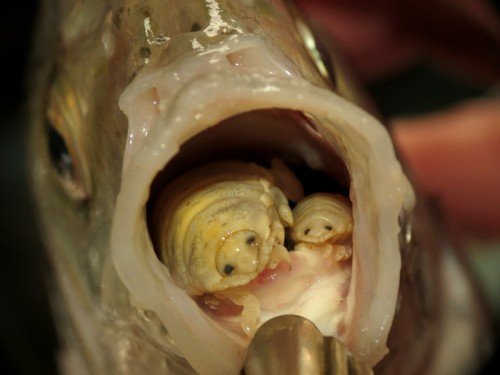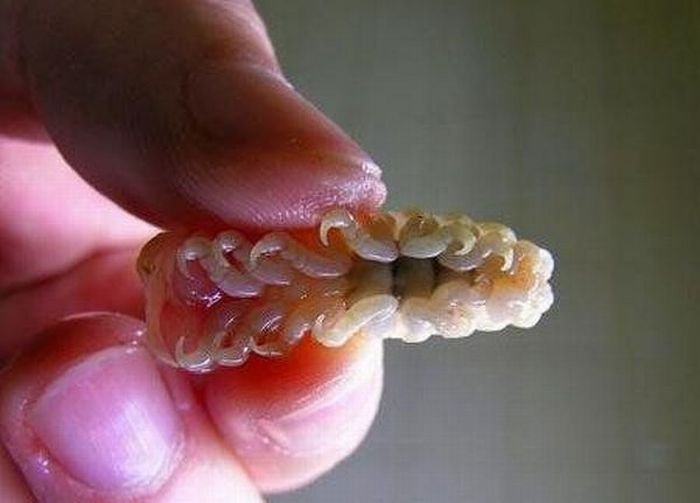
The parasite penetrates the gills and attaches to the base of the tongue of the spotted pink snapper. It sucks blood with claws in its front end, which leads to tongue atrophy due to lack of blood.After that, the parasite replaces the fish tongue, attaching its own body to the muscles of the stump of the tongue. Fish can use the parasite in the same way as a normal tongue. Apparently, the parasite does not cause any other damage to the host. When Cymothoa exigua replaces the tongue, some parasites feed on the blood of the host, but most of them feed on the mucus of the fish.

This is the only known case in which the parasite functionally replaces the host organ. It is currently believed that C. exigua is safe for humans, but there is a danger of being bitten if a live parasite is caught.

There are many types of Cymothoa, but only Cymothoa exigua is known to eat and replace the host tongue.
Please

Thanks for the post! This was sort of hard to believe, but I went out to DuckDuckGo and verified it on a couple of other sites. It's a very interesting parasite.
I included a link to your post in my article, Science and technology micro-summaries for July 21, 2019, and set a beneficiary so that you'll receive 5% of the rewards from that post.
The world is full of wonders, very few have discovered.
Thank you.
That is amazing! Gross, but amazing. At first blush, I am wondering if there are potential uses for a CRISPR'd variety of this parasite in the field of politics.
The mind boggles at the possibilities.
Thanks!